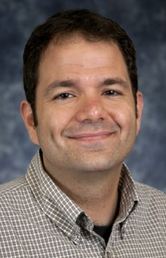 Jason Boone is coordinating minister for the Peace and Justice Support Network
Jason Boone is coordinating minister for the Peace and Justice Support Network
The first lesson in “Returning Veterans, Returning Hope: Seeking Peace Together”, a six-week Sunday School curriculum focused on returning veterans and how the church can play a part in their healing journeys, is about crossing barriers. The idea is that there are potentially many barriers that may prevent members of a peace church and military veterans from embracing each other as sons and daughters of God. We must recognize these barriers if we are to navigate around them and come to a place where Mennonites and veterans can worship together, work for peace together, love each other.
But my friend Dick Davis, former conference minster of Pacific Southwest Mennonite Conference, has suggested that crossing barriers with veterans is only the first step in a larger journey. While it may seem from a distance that veterans and pacifists shouldn’t have much in common, the reality is that the bonds that unite us are much stronger than our differences. Learning to see the bonds that unite instead of the barriers that separate is a spiritual revolution that can free us as individuals, communities and nations to seek peace in radical ways.
We tend to use things like life experiences, beliefs and worldviews as reference points for joining with or separating from others. If we have similar experiences and beliefs as others, it’s natural to find affinity with them. And if our experiences and beliefs are disparate, that’s the catalyst for separation.
But at our core, we all share a phenomenal characteristic: We are all made in the image of God. We are all brothers and sisters. This is the recognition that changes fear into love, separation into unity. Once the fear is gone and the separation is overcome, we can begin to beat our swords into plowshares and work for justice for all people, not just those in our small tribe.![]()
Last year I traveled with the Peace and Justice Support Network Advisory Council to meet with Fr. Richard Rohr at his Center for Action and Contemplation in New Mexico. We wanted to hear his wisdom on balancing the spiritual dimensions of peace with the active dimensions of peace. Fr. Richard was emphatic that learning to see in this new way must be the first step in working towards lasting peace and justice.
There are many words and phrases used to name and describe this kind of vision – non-dual seeing, contemplation, seeing the world as God sees it, to name a few. The outcome is the same though. No longer seeing others as threats, we are finally free to love.
How do we learn to see in this way? This is the longer journey. Learning to cross barriers with veterans, or with any people that aren’t normally found in our small worlds of experience and belief, is one way. Spiritual practices are another.
Spiritual practices are times when we commit to not using our discriminating mind and instead expose our self to God. Centering prayer, walking prayer, Lectio Divina are examples, but they aren’t the only ones.
The ideal is to do both – crossing the barriers and incorporating the spiritual practices into our lives. Those, combined with the support of a church community, can help us learn to see the world differently. From there, anything is possible.


